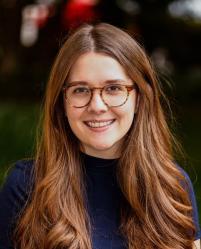Wealth cushions adverse economic shocks, such as loss of employment, and helps to fund investments in human capital, like college and post-graduate training. Wealth inequality is much higher than income inequality in the United States. Understanding the dynamics of wealth accumulation may be important in narrowing wealth gaps. Here we study intragenerational wealth mobility using the Panel Study of Income Dynamics (PSID).
Using a measure of individual wealth, we first study relative wealth mobility across the prime wealth accumulation years and find that a ten-point increase in an individual’s wealth percentile in their early thirties leads to a 5.9-point increase in their wealth percentile in their late fifties (i.e., a rank-rank slope of 0.59).
We also show that rates of wealth mobility are highest between the ages of 25 and 35. Finally, we consider how wealth mobility differs across socioeconomic groups. Black Americans experience much less upward wealth mobility and much more downward wealth mobility than white Americans, conditional on the same initial wealth level.
For those with median wealth in their early thirties, Black Americans fall to 38th wealth percentile in their late fifties while white Americans rise to 57th wealth percentile in their late fifties, on average. We find similar patterns by educational attainment and income level. In total, our results point to flexible wealth dynamics early in adulthood that subsequently solidify and reinforce existing race and class inequalities.
The Brookings Institution is financed through the support of a diverse array of foundations, corporations, governments, individuals, as well as an endowment. A list of donors can be found in our annual reports published online here. The findings, interpretations, and conclusions in this report are solely those of its author(s) and are not influenced by any donation.






